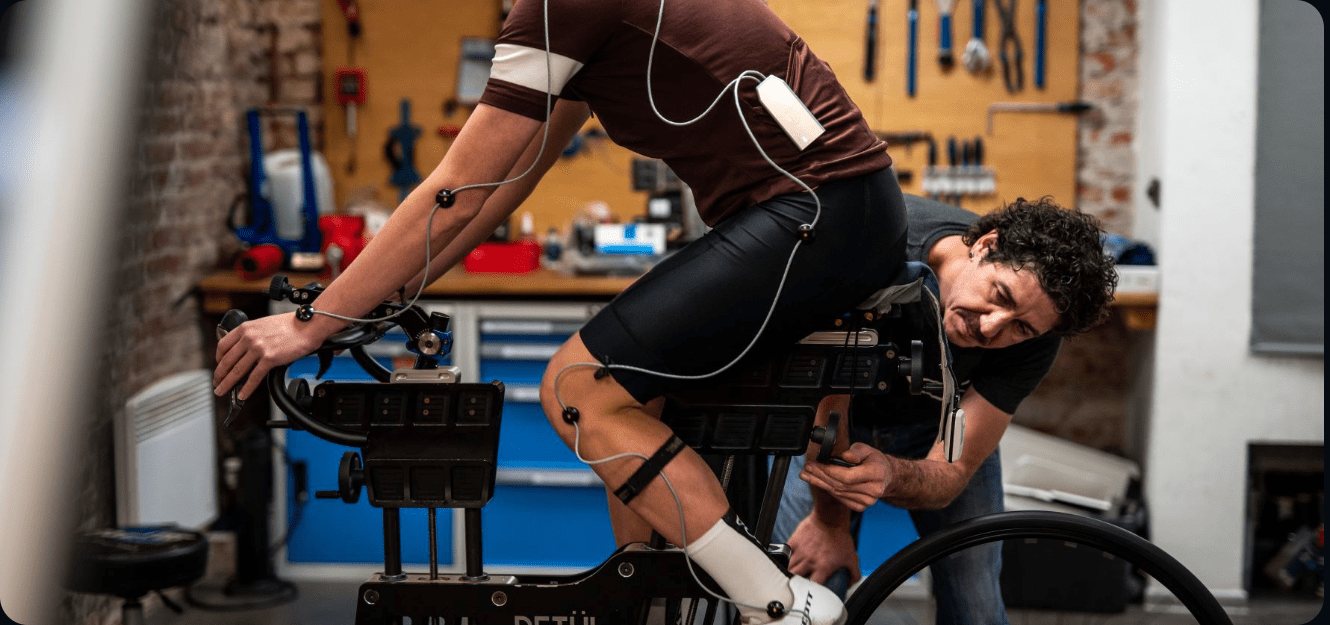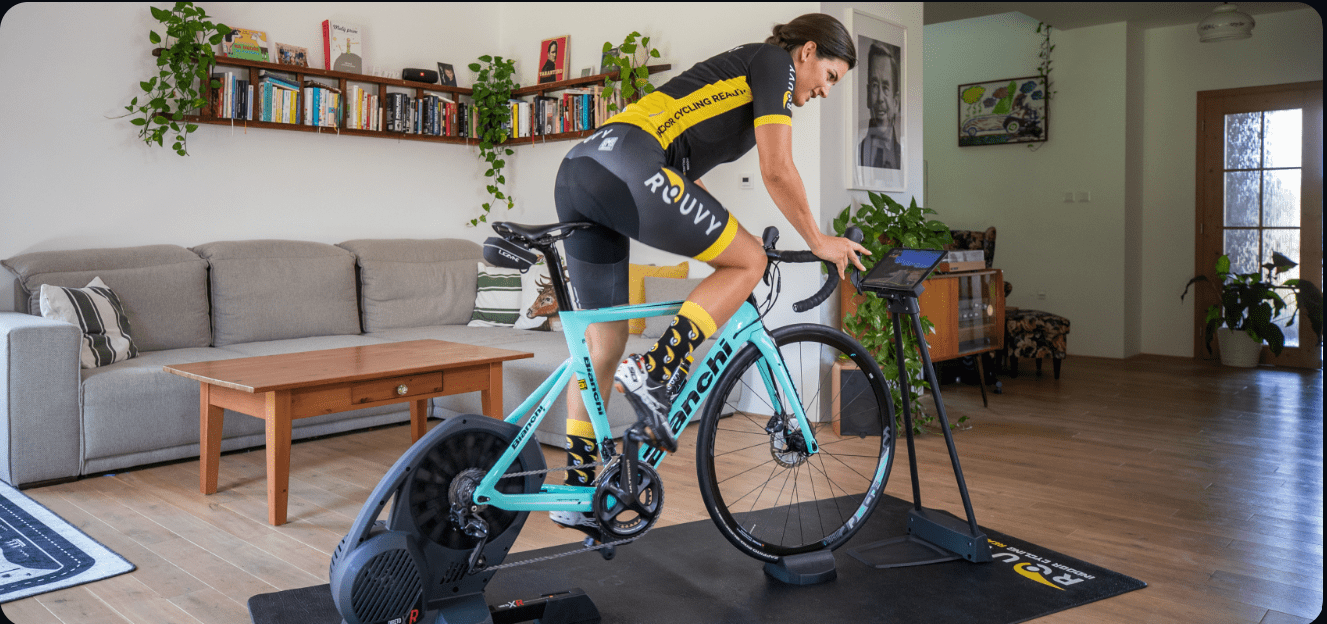Today, bike fitting is a specific and meticulous process. However, it has not always been this way. In the early 1970s, CONI (the Italian National Olympic Committee) introduced a general bike fit, whereby a group of 30-40 elite-level cyclists were inspected, and the organization came up with certain formulas for a “universal” bike fit. However, there were two main problems with this: 40 people is not many, and not everyone in the world was an elite-level cyclist! This exclusion of hobby riders did not help the main population of cyclists searching for the right bike fit.
It was in the early 1980s that real progress was made in making more specific bike fits, where a more tailored, individual-based approach was used. The LeMond formula (founded by US cyclist and Tour de France winner Greg LeMond), which calculated one’s ideal saddle height, helped millions of amateur riders when fitting their bikes. A person’s flexibility and core strength also was given more attention when choosing the correct bike fit.
Why a good bike fit is important
Sitting in KOA – a specialist bicycle shop in the Czech capital city of Prague – we learn that a bike should be fitted correctly for four main reasons. These are: comfort and health, safety, performance optimisation, and good aerodynamics. The fulfilment of all of these aspects will lead to the most pleasant cycle ride possible.
In the realm of indoor cycling, a bike fit is even more crucial than it is for outdoor bikes in ensuring comfort. This is because indoor rides feature more time pedalling (due to the stationary nature of the cycle) and more time sitting in the exact same position, without changes in the road causing you to slightly alter your stance. Paired with increased amounts of sweat causing reduced grip on the cycle, the correct bike fit for indoor cyclists is thus imperative in ensuring a smooth cycling experience.
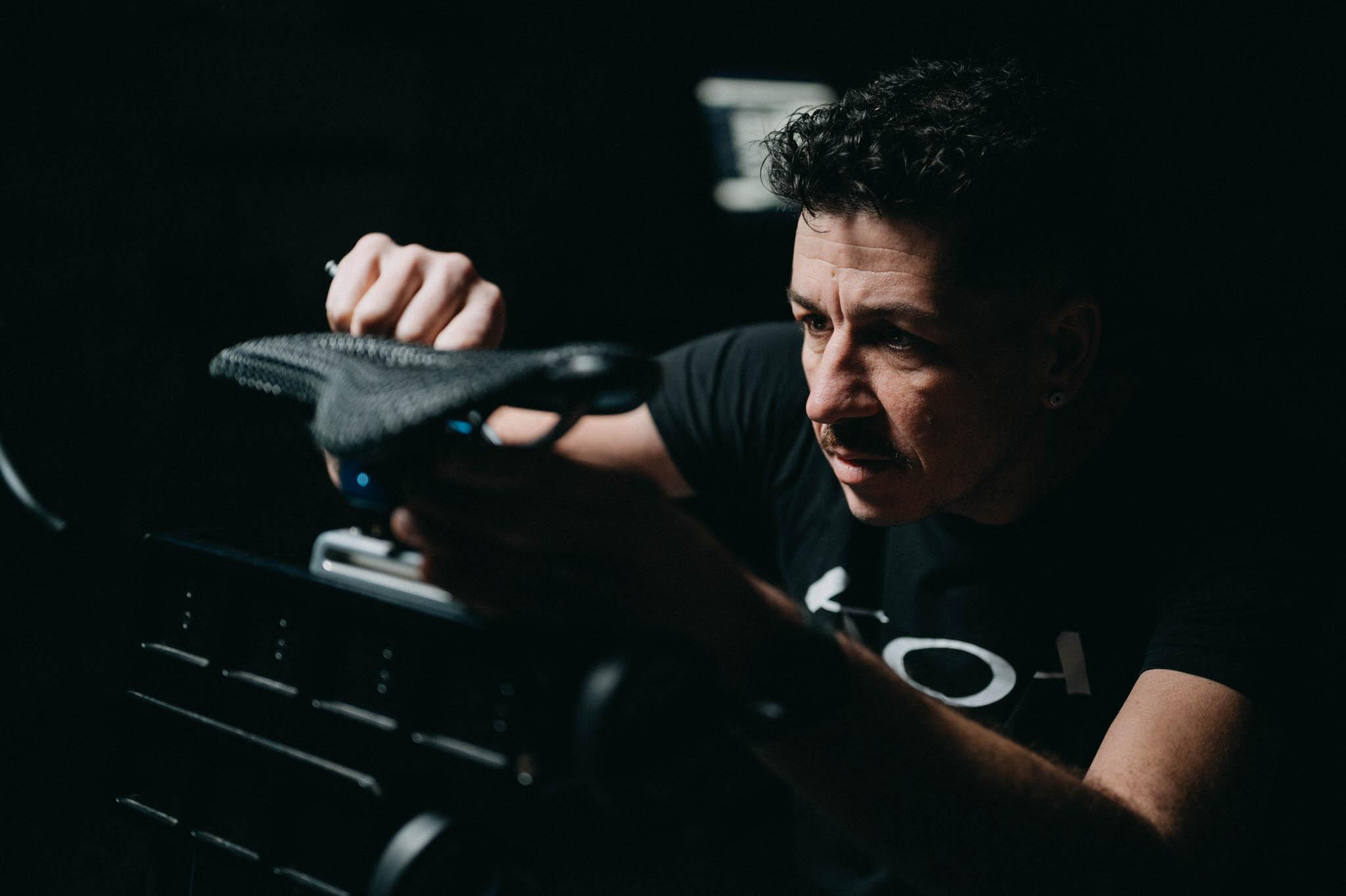
Jan Falge of KOA, a specialist and professional bike fitter who chatted with us, said a cyclist’s purpose of riding is crucial in determining the correct bike fit. Bicycles used for leisure, performance and racing will all be fitted in different ways to suit the riders’ needs.
He also mentioned that different brands of a bicycle can fit people in different ways, even if the measurements are the same. To give an example, bikes with a steel frame offer more flexibility for the rider, whereas carbon bikes are geared more towards performance (and are lighter).
The purchase of a new bike can be an expensive process. If the fit is inadequate, it can become even more costly – not only for your wallet, but also your health. That’s why it is recommended to properly go through the fitting process before the purchase of a bike.
Prior to fitting
Before someone tries to fit a new bike, there are a few things to consider. The rider’s medical history is key: pre-existing conditions relating to a body part (the knees, for example), may mean that even the best-fit possible will not alleviate pain.
A rider’s past history (whether they have been doing office work most of their life or have a sports background) helps to contextualise any issues they have. Frequent problems such as asymmetries (where, for example, one sit bone is lower than the other or when one leg is shorter) may complicate the bike-fitting process. Yet small, custom adjustments can be made to target a specific issue.
Preparation
The best bike-fitting process involves a consultation on a person’s riding/physical history, needs (the type of bike they want to buy) and appropriate measurements. Exercises such as deep squats, leg bends and press-ups are carried out to assess the rider’s mobility, and massages are done to uncover any potential areas of pain.
Thereafter, the exact measurements of the rider’s body (height, leg and arm length for example) are taken. Modern technology has even allowed for sensors and electrodes to be placed on a rider to give the exact dimensions and angles of their body.
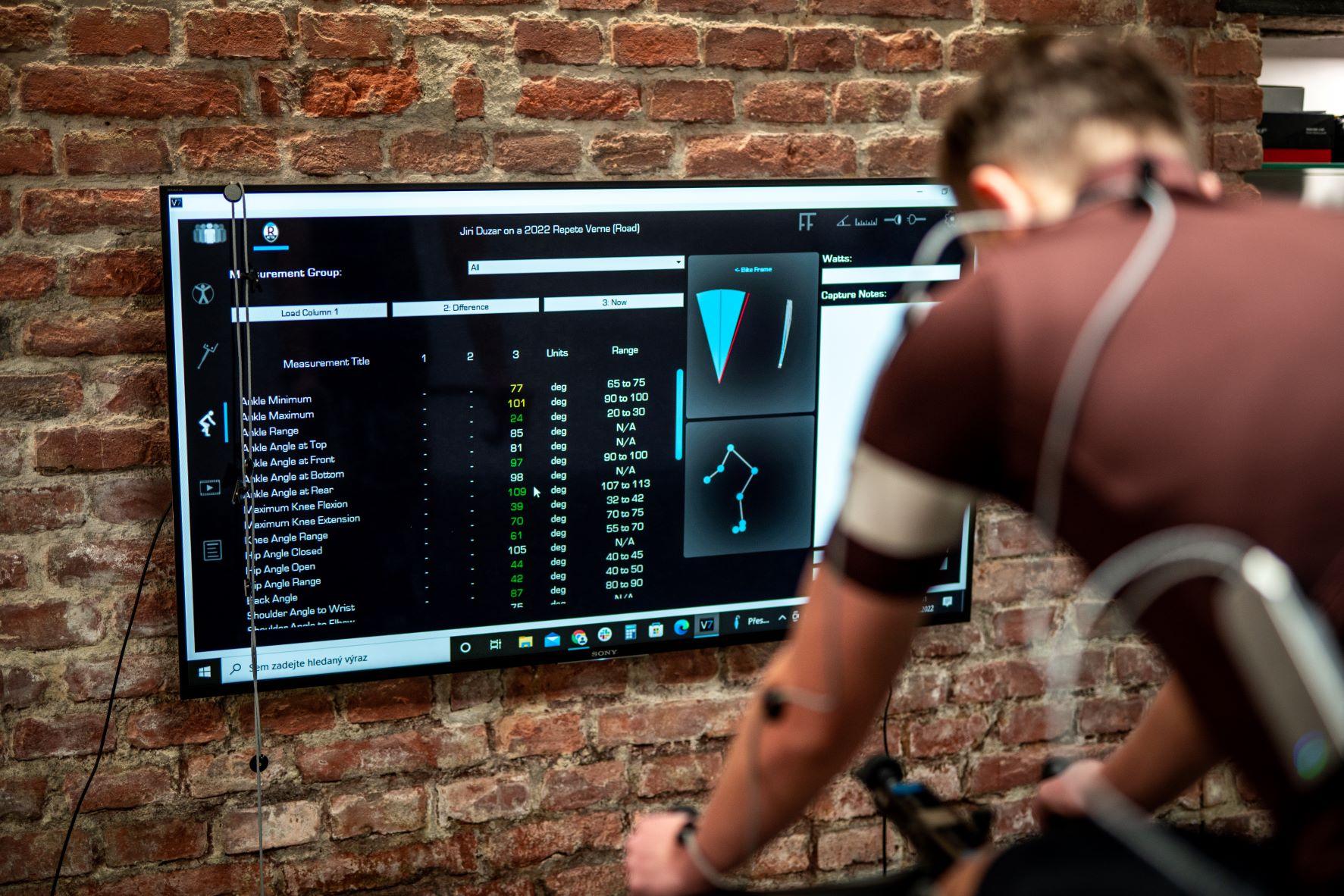
Without the correct posture and riding stance, pain can occur even with the most perfect bike fit. Ensuring the rider has the correct riding posture before the fitting process is crucial, Jan tells us.
The key causes of bike pain - and how to reduce it
There are three main contact points of a bicycle: the position of the saddle, handlebar and placement of feet on the pedals. The optimisation of all of these creates the best and most comfortable cycling experience possible.
The most common ailments people have is with the knees and back. Other frequent issues are neck and shoulder pain, numbness in hands and feet, as well as pain in the crotch. This, the vast majority of the time, is as a result of a poor bike fit.
Knees and feet
The source of the pain can usually be linked to the problem of the bike fit. For example, knee pain normally relates to an incorrect saddle tilt: front-knee pain means that the saddle is tilted too forward, and back-knee pain means that it is too back. Further, a saddle that is too low or high can also be causative of knee pain. As a rule of thumb, the heel should lightly touch the pedal when the crank arm is in the 6 o'clock position (vertical) position.
Foot pain is a sign that the position of the cleats are wrong – usually, too forward. It can also mean that a rider’s metatarsals are not positioned correctly in relation with the spindle (it is recommended that the first metatarsal head should be placed directly above the pedal spindle).
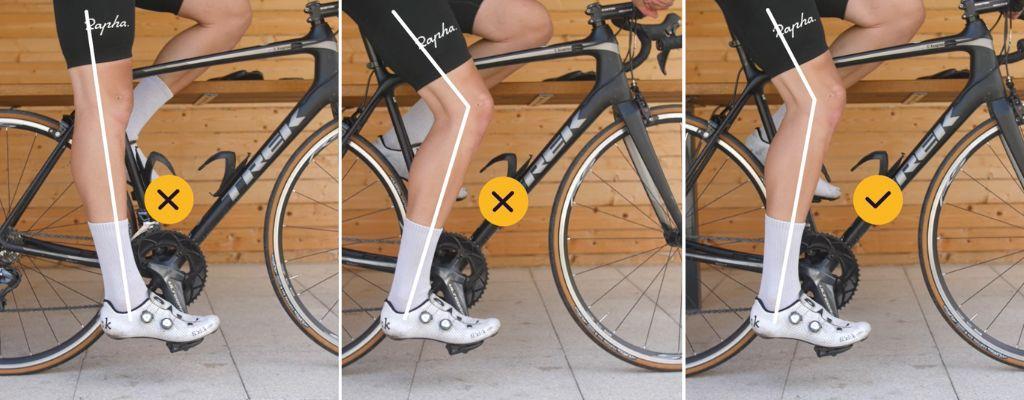
The hip and lower-back area
Hip or crotch pain (or numbness) is indicative of a poor angle of the saddle. A popular misconception is that the saddle must be totally horizontal; this is not the case. Bicycle saddles can be lowered downwards by 1-2 degrees to increase comfort. Jan notes that 90% of the people he sees say that they don't know why they put a saddle a specific way!
Lower-back pain can be linked with the mispositioning of the saddle and handlebars. A saddle that is too high will cause the rider to be hunched over his/her handlebars (an issue that is exacerbated if the handlebars are too low). Conversely, a saddle that is too low can cause a rider to cycle in improper form – with their legs being too “open” while pedalling. This can cause both lower-back and hip pain.
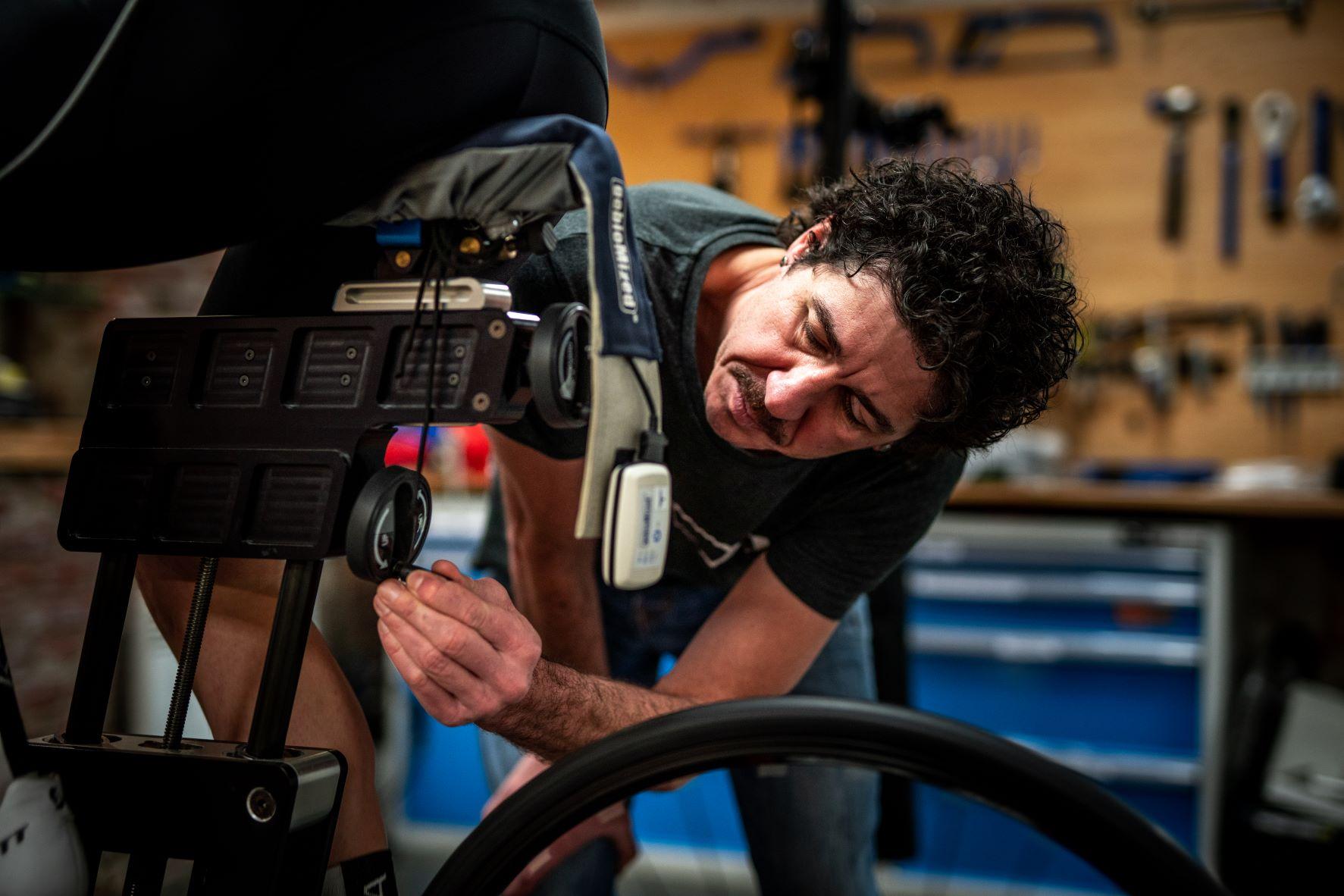
The bottom
An incorrect shape of the bike seat can also be problematic for riders. A saddle that is too narrow causes pain for a rider’s perineum. It is worth mentioning also that women have wider sit bones, and so should aim to use wider seats, else pain may ensue (handily, low-cost aids such as chamois cream can alleviate saddle-related pain).
Recently, there has also been a trend in manufacturing saddles with a cut-out (or “relief channel”) in the middle, so the soft tissue and nerve endings of riders’ cheekbones will not be compressed. A bike seat may also be too soft, which can cause pain for the general buttocks region. Experts at Posedla, a specialist bike-saddle company, have devised the first customisable, 3D-printed saddle, designed to maximise comfort – a solution that could end pain for millions of cyclists.
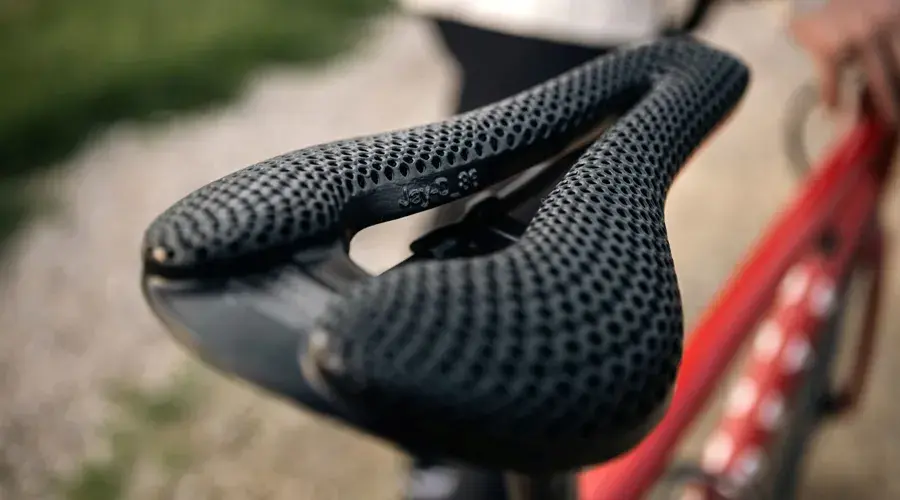
The upper body
The shoulders, upper back, neck and arms of a rider – which are all interconnected – are typically the cause of handlebars’ misalignment. The cause of this tends to be the handlebars being too low, and there not being enough space between the saddle and the handlebars (sometimes, the saddle may also be too far forward).
Simply raising the handlebars, however, may not be enough: if the size of the bike frame is too small, then the only solution to create adequate space between seat and handlebars is a change of bike frame to one that correctly suits the rider’s height.
